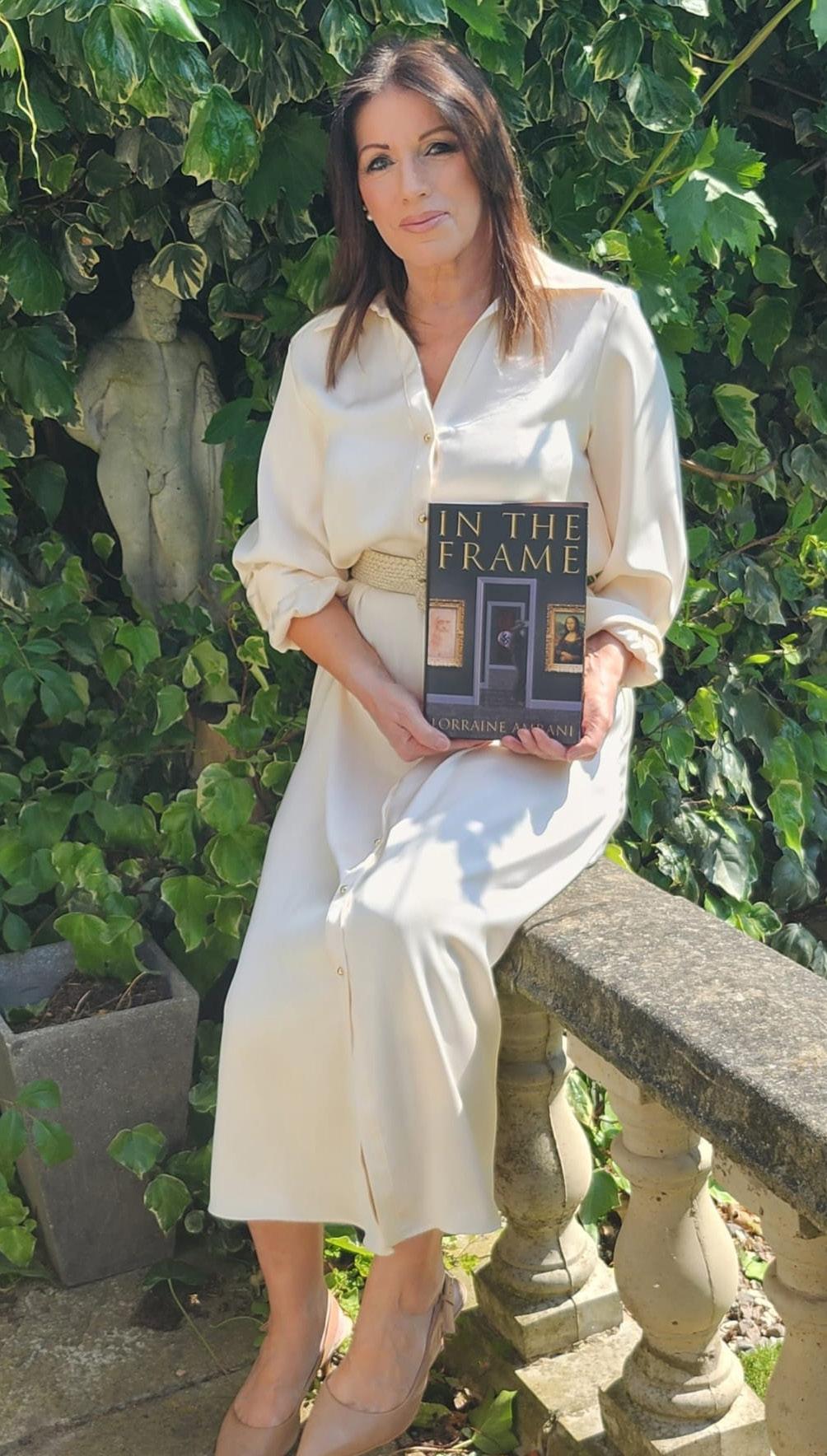
3 minute read
We interview Lorraine Amrani, author of In the Frame, her new first novel
What was your initial inspiration for wanting to write this novel?
L A: The idea of the story had been sitting lodged in the recess of my mind for about five years, and it simply refused to go away. There was hardly a day that went past when I didn’t think about it. I would wake up and there it was, nagging away at me until finally I dived in and let fate take me where it wanted me to go.
This is your first novel. Have you always enjoyed writing?
L A: Writing in any form was not something I had ever contemplated in my wildest imagination; it was that far off grid for me. Painting and history were my main interests, so, to say it took me by surprise is an inadequate understatement.
The English novelist Graham Greene famously insisted that he wrote an average of 500 words every morning five days a week. Greene would stop once he reached his daily word quota. Could you explain your own writing methods with this novel? Did you map out the plot chapter by chapter or was the writing more spontaneous?
L A: I never set out to write a set number of words a day, I am not that disciplined, but I did manage to write nearly every day.
How long did the book take you to complete?
L A: Overall the book took about two years to write, although the thinking process took a number of years to piece all the parts together.
Did the main story for In the Frame come to you quickly? Which scenes were easiest to write?
L A: Thinking and planning the story line was very entertaining in itself. I would play each scene out in my head, bringing the characters onto the set as and when required, much like making a movie I would imagine, and then let rehearsals begin. You were the writer, director, producer, set designer, and, you had to make your own coffee and supply your own doughnuts! One chapter I particularly enjoyed writing was when Francine ‘watched’ Leonardo paint the portrait of Jesus, that scene really did make my hair stand on end, it was so vivid in my mind at the time.
Some very colourful, even sinister, characters feature in the novel. How did these characters come to you and how did you visualise them?
L A: About the characters, I had a rough idea of each character I wanted to portray, I could easily visualise them, but I simply let each one morph into their unique personalities as it went along. It was if they literally came into being by themselves, so I suppose being spontaneous and not too prescriptive, allowed each person to reveal who they were... or weren’t! I found each character had its own merit, however, when a person is borderline evil, then there is so much more scope, and it can be quite hard to rein him or her in, their wickedness simply knows no bounds. They are not constrained by having a conscience.
Some of the characters are based on real historical figures, others are entirely invented. Which ones were the most satisfying for you to write and which were the most difficult?
L A: The facts about the actual historical figures within the books reflect the events at that time. The nature of these very flawed, and infamous, human beings are true, however, all the scenes within the chapters are entirely imagined, for example, the scene at the Hotel Ritz between to massive real life egos, one being Coco Chanel, and the other the Nazi Hermann Goring, is something I conjured up, like the proverbial fly on the wall, I just watched these two monsters play out their narcissistic games with each other. Of course, when you are the second most powerful man in Europe, then there is only going to be one winner. I thought Coco Chanel would have been much more astute than she turned out to be!
The novel combines your interests in the visual arts, art history, the contemporary art market, as well as history. What is more important to you, art, fiction or history?
L A: That is a difficult question to answer. I have been in love with history as long as I can remember. But I am truly fascinated by the art market. It is hard, if not impossible, to fully comprehend just how layered and opaque this world is, I imagine its tentacles go very wide and very deep.
Describe how it felt to finally finish the novel and then to see it in print?
L A: Working on this project for such a long time was all-consuming. When I began, I had no idea whether or not I would make it to the end, so it was a huge relief to finally put a full stop at the end of the last chapter. Seeing it in print is a dream come true.
What are you now writing about? Will it also be set in the art world, or will it something completely different?
L A: I am now half-way through my second book. The story revolves around two surgeons in the late 19th century and takes place in London, Vienna and Venice –much more than that I cannot say!










